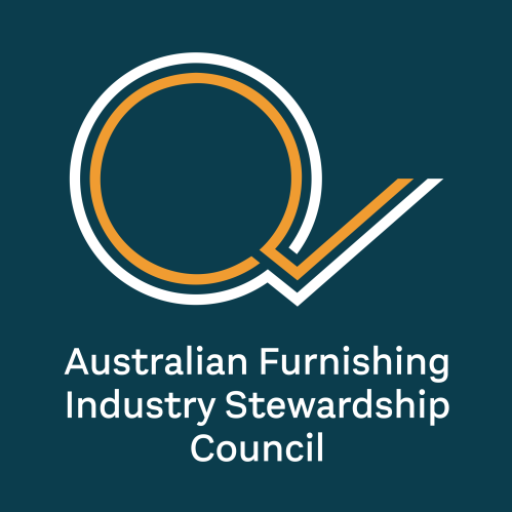Global insights, local action: What the IT sector can teach furniture about climate strategy
At the Australian Furnishing Industry Stewardship Council (AFISC), in partnership with the Australian Furniture Association (AFA), we keep a close eye on global sustainability insights that can inform our sector. TCO Certified recently published an excellent article — Nine facts that help you set a comprehensive climate strategy for IT. You can read the full piece here.
At first glance, IT and furniture may feel worlds apart. But when it comes to climate action, the principles are strikingly similar. Both industries rely on complex global supply chains, carbon-intensive materials, and face growing pressure from procurement policies and consumers demanding transparency.
Here are some key takeaways from the IT sector — and how they apply to furniture:
- Act with urgency — and set science-based targets
The climate emergency demands immediate action. In IT, buyers expect suppliers to align with science-based targets and net zero pathways. Furniture manufacturers must do the same, setting measurable emissions reduction goals that cover raw materials, production, transport and end-of-life. The Furniture Passport Australia System (FPAS) will make this practical by issuing digital product passports that capture verified data on embodied carbon, durability and material flows.
- Avoid proliferation — address fast furniture
IT has been shaped by an explosion of devices per person. Furniture faces a parallel issue: fast furniture. Cheap, short-lived products make impulse buying easy but fuel waste and emissions. This “buy-and-dispose” cycle undermines climate targets and circularity. The solution is to shift demand toward durable, repairable and responsibly sourced furniture, supported by warranties, repair services and take-back systems.
- Most emissions come from production — and will soon need to be reported
In both IT and furniture, emissions are dominated by production: harvesting timber, processing textiles, foams, metals, and long-haul transport. With Australia’s upcoming Mandatory Reporting Standards (MRS), companies will be required to disclose these Scope 3 supply chain emissions. Preparing now by engaging suppliers and using tools such as FPAS to track supply chain data and materials, will make compliance smoother and provide a competitive edge.
- Energy efficiency helps — but circularity saves more
Energy efficiency in IT products has limits if devices are constantly replaced. For furniture, the same applies to manufacturing: improving efficiency in factories is important, but the bigger savings come from circularity. Repairing, refurbishing and reusing furniture avoids the high energy demand of virgin production. Circular practices can reduce material extraction and the energy use tied to it.
- Beware of incomplete data — use robust reporting tools
Just as IT carbon footprints are hard to compare, furniture sustainability claims can be inconsistent without standardised reporting. Robust frameworks like Environmental Product Declarations (EPDs), third-party certifications and transparency tool integration provide verified, comparable data. These tools not only ensure clarity but also reduce the risk of greenwashing and strengthen credibility with buyers.
- Longevity is everything — design and procure for quality
Durability is one of the strongest levers for lowering emissions. Cheap, fast furniture is designed for short lifespans, locking in waste and carbon. By contrast, high-quality furniture lasts, can be repaired, re-used and retains value. Both design and procurement matter here: manufacturers must build for longevity, and buyers should specify durability, repairability and warranties. In practice, quality is climate action.
- Renewable energy reduces embodied carbon
In IT, renewable power during both manufacturing and use lowers emissions. For furniture, production stages like timber milling, textile finishing, foam curing and metal fabrication are highly energy-intensive. Transitioning factories and suppliers to renewable energy cuts emissions at its source. Paired with circular design that reduces the need for virgin materials, renewable energy adoption delivers some of the fastest, most measurable climate gains.
- Build resilience with verified data and standards
Climate change increases risks — from raw material shortages to shipping volatility and regulatory shifts. The best defence is transparency. Verified data captured through recognised standards, ecolabels, digital product passports and other transparency tools allows businesses to monitor embodied carbon, durability and chemicals of concern. Embedding this data into procurement and compliance frameworks helps companies prepare for disruptions, demonstrate due diligence, and compete on more than just cost.
- Procurement is the lever that ties it all together
Procurement decisions shape value chains. In IT, sustainable purchasing has shifted entire markets. Furniture is following suit, with increasing legislation and policies driving buyers to demand verified data through digital product passports, Environmental Product Declarations (EPDs) and recognised certifications. These tools give procurers confidence in durability, recyclability and embodied carbon, while suppliers who can provide them gain access to growing opportunities and reduce compliance risks.
Why this matters
The parallels show that lessons from IT are highly relevant to furniture. Both industries are being reshaped by procurement policies, supply chain transparency, and consumer expectations. By adapting proven approaches, the furnishing sector can accelerate its own transition to a circular, low-carbon future.
AFISC and AFA are here to support members with tools like FPAS, the Chemicals of Concern Industry Review, and procurement advocacy. If you’d like to discuss how these nine fundamentals could apply to your business, please contact us.
This article was inspired by “Nine facts that help you set a comprehensive climate strategy for IT,” TCO Certified (2024). Read the original here.

